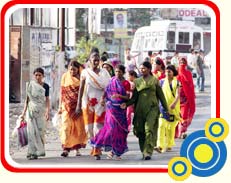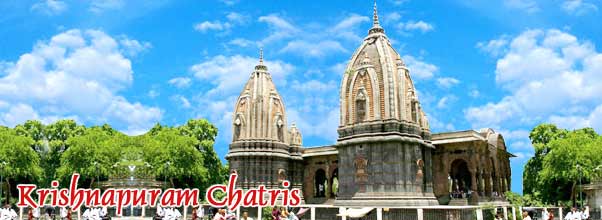
As
per historical records, the Maratha warriors were in constant battle
with the Mughal Empire. During the war, their army transit camps here
attracted the local Zamindars (landlords) for trade. The landlords were
lured by the promise of lucrative trade and settled in the villages on
the banks of River Khan and Saraswati. This laid the foundation of the
commerce center of Indore in 1715. Later in 1741, the temple of
Indreshwar was built in the town, from which it derived its name Indore.
Since then the Indore city of India has changed drastically. Today, the
major population of Indore belongs to different parts of India. They
have actually migrated and settled in the heart of Madhya Pradesh for
various reasons like livelihood, education and its peaceful environment.
People of Indore are from all castes, creed and color. As a result,
Indore boasts of a true cosmopolitan city culture with multi ethnic and
multilingual people living in perfect harmony. The local people of
Indore reflect the true spirit of unity in diversity.
They are highly social and progressive and present a beautiful blend of
all the cultures. The diverse culture is quite visible even in the food
habits of the people. The food variety ranges from South Indian 'Idli
Dosa, Vada Sambhar' to 'Dal-Bafla', a typical Malwa Food. Indore is
famous for its wide variety of "Namkeens'', Gujarati & Chinese
food restaurants and Bengali sweets. However, a survey on the food
habits of the people has shown that Indore people are prone to diseases
like hypertension and heart problems.


 As
per historical records, the Maratha warriors were in constant battle
with the Mughal Empire. During the war, their army transit camps here
attracted the local Zamindars (landlords) for trade. The landlords were
lured by the promise of lucrative trade and settled in the villages on
the banks of River Khan and Saraswati. This laid the foundation of the
commerce center of Indore in 1715. Later in 1741, the temple of
Indreshwar was built in the town, from which it derived its name Indore.
As
per historical records, the Maratha warriors were in constant battle
with the Mughal Empire. During the war, their army transit camps here
attracted the local Zamindars (landlords) for trade. The landlords were
lured by the promise of lucrative trade and settled in the villages on
the banks of River Khan and Saraswati. This laid the foundation of the
commerce center of Indore in 1715. Later in 1741, the temple of
Indreshwar was built in the town, from which it derived its name Indore.